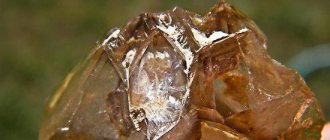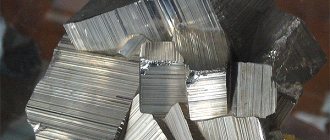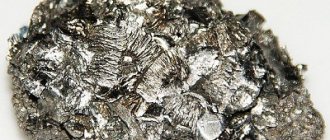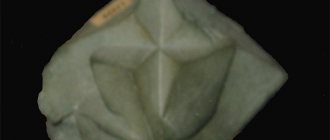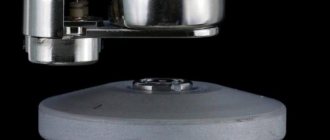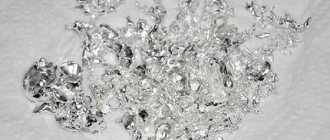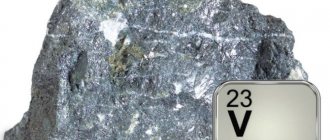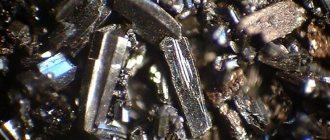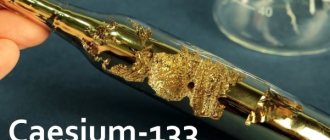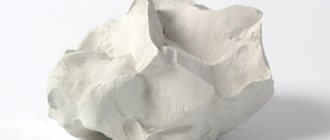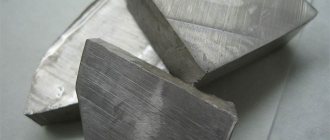Origin of the diamond
Called diamond, thanks to the translation from Arabic “hard”, it is the hardest mineral in the whole world. The stone has been used in the form of jewelry since ancient times and also had financial implications. It is not known for certain where the first diamond object was discovered, due to the appearance of the mineral. No matter how beautiful a diamond processed by the hands of masters is, when mined it stands out as a simple crystal rock crystal in an inconspicuous form. All names of the mineral are associated and characterized by its hardness: almas, adamas, diamond. The very name “diamond” came into society thanks to Afanasy Nikitin, who published the essay “Walking across Three Seas” in 1472.
Jewelry craftsmanship
The most famous industry where diamonds are involved is the jewelry industry. Moreover, here the mineral is used both as an object and as a means of processing it. Diamond-coated equipment is a necessary condition for high-quality cutting. It is with its help that a precious diamond is born from a modified form of carbon - one of the most expensive gems in the world.
This stone is often the centerpiece of imperial and royal treasures. Both the crown of the Russian emperors and the crown of the British Empire are decorated with it, and it is inserted into sceptres, royal staffs and orbs. Owning jewelry with diamonds emphasizes the status and position in society and demonstrates the financial condition of the owner. Jewelry with this stone often became family heirlooms and was passed down from generation to generation.
The value of diamond jewelry does not decrease over time, but only increases in price.
Where and how are they mined?
Diamond deposits are found in the countries: Russia, Africa, Australia and Canada. The first to start extracting minerals were the peoples of India, but by the end of the 19th century, reserves were running out. The richest mineral deposits were discovered in the middle of the 18th century in Brazil.
Reference. Diamond is pure carbon, and its direct cousin is graphite. To transform graphite into diamond, special conditions are needed: a pressure of about 60 thousand atmospheres and a temperature of over 900 degrees. Such conditions of origin exist in the crust of the globe at a depth of over 80 km. It reaches the surface, thanks to volcanic magma, forming kimberlite pipes - the body in which diamond is formed.
The mineral is not only mined in the ground, but also reaches the earth's surface through meteorites. The process of diamond formation is associated with the conditions during the collision of unearthly objects with the earth, and they are called impactites. Mining impactites is unprofitable due to the small size of the crystals. For industrial mining, the method of extracting deposits that are located in the ground is used.
There are two large diamond mining companies in the world. De Beers - USA and Alrosa - Russia, each of them extracts a large amount of minerals from the world turnover.
Evaluation of shape, quality and color
In a special diamond sorting center, the fate of each individual stone is decided - whether it will be used for technical needs or for jewelry . The purpose of the vibrating screen screen is to separate small crystals into classes depending on their size. For this purpose, from 4 to 8 sieves are used. One and a half thousand stones are placed in the unit at a time.
A vibrating screen divides the smallest crystals into groups; larger stones are the domain of weighing machines, but people sort the largest minerals. The general task is to classify stones by size and weight.
16 size and weight groups of diamonds were developed, and later 10 types of stone shapes, 5 quality options and 10 color classes were added to them. The result is 8 thousand positions.
Appraisers determine the shape, quality and color of crystals. To do this, they use microscopes and magnifying glasses. Dozens of diamonds pass through the hands of these specialists in an hour, and when it comes to small specimens, then they number in the hundreds. Moreover, experts evaluate each stone three times; mistakes are unacceptable here.
There are no bad or unnecessary diamonds—everyone is used. Even in ancient times, the Chinese actively used these stones to polish their ritual axes, which were made of corundum, a less hard natural material. Today, 60% of mined diamonds are used for industrial purposes, and 40% for jewelry.
To produce jewelry, the stones, after a long and complex selection, end up at a cutting factory. Here they change their appearance and name - they become diamonds.
Properties and main characteristics
Each natural mineral is formed under certain conditions and with a specific composition of characteristics. Next, we will take a closer look at the physical properties of diamond, structure and color for basic information.
Physical and mechanical properties
The mineral is an allotropic type of carbon; under natural conditions it can exist for a very long time, but with increasing temperature the structure changes into graphite. Carat is a unit of measurement for diamond. A distinctive feature of a diamond from other natural stones is its characteristic hardness, which measures 10 on the Mohs scale. A feature of hard diamond is the fragility of the mineral. Physical properties include dielectric, that is, the gem does not conduct electric current. Diamond can melt only at temperatures above 3700 degrees and at a pressure of 11 gigapascals. If you direct a stream of oxygen at a diamond, the mineral burns with a blue flame at a temperature of over 700 degrees, and subsequently turns into carbon dioxide. The density of diamond is 3510 kg/m³.
Structure
Diamond belongs to a type of crystallography - the structure of a system of cubic type. The internal image of the structure of the mineral is represented by a geometric shape - a grid or lattice in the amount of two pieces. Belongs to the group of spatial crystalline forms and has the formula Fd3m. In a lattice, inside a cubic plane, the atoms are located at the top and in the center. The same structure exists in other minerals, for example, silicon, transformed tin and others. Due to defects, diamonds take on different colors.
Coloring
In the world, in addition to traditional transparent stones, there are 1% of minerals with pink, yellow, red, black, purple and blue tints. These are very rare diamonds, their cost per 1 carat can exceed $1 million:
- diamonds with a predominance of yellow or brown shades are formed due to the inclusion of iron in the composition;
- the green palette of the mineral depends on irradiation;
- a cloudy or smoky structure can be seen if a component of the diamond is an admixture of boron;
- the black tones of the crystal are obtained due to the inclusion of carbon impurities in the diamond composition;
- the pink or purple palette is obtained by deforming the structure of the stone.
Due to the sign of high refraction, a diamond receives its incredible brilliance and sparkle.
When mining an unpresentable diamond, you rarely see that same bright shine, but with modern cutting technologies, in reality a person gets a diamond.
Similarities and differences between diamond and graphite
Carbon is one of the most abundant elements on Earth and is found in many substances, especially living organisms. Graphite, like diamond, is made of carbon, but the structures of diamond and graphite are very different. Diamond can turn into graphite under the influence of high temperatures without oxygen, but under normal conditions it is able to remain unchanged indefinitely, this is called metastability, and the type of diamond crystal lattice is cube. But graphite is a layered mineral, its structure looks like a series of layers located in different planes. These layers are made up of hexagons that form a honeycomb-like system. Strong bonds are formed only between these hexagons, but between the layers they are extremely weak, which is what causes the layering of the mineral. In addition to low hardness, graphite absorbs light and has a metallic luster, which is also very different from diamond.
These minerals are the most striking example of allotropy - a phenomenon in which substances have different physical properties, although they are composed of the same chemical element.
Chemical composition
Diamond is natural carbon. The peculiarity of the structure gives the mineral a transparent appearance. Nature rarely creates perfect stones, so most contain defects and impurities. The chemical composition of the crystal includes: nitrogen, aluminum, boron, magnesium, calcium, iron, copper, barium and silicon. Diamond components can include: solid, liquid and gaseous inclusions.
Diamond formula
The chemical formula of diamond is simple - element C. This is due to the fact that diamond is pure carbon, and the impurities included in its composition are very small, less than 15%, and therefore are not included in the formula. The serial number in the table is 6.
Construction works
One of the main advantages of diamond is its hardness. This is the strongest mineral in the world and in most cases it is this indicator that determines the wide scope of its use in construction.
Interesting! Modern construction work is carried out with the participation of volumetric structures made of concrete. Dismantling, drilling, sawing and cutting such durable materials requires not only powerful equipment, but its coated parts, whose crystal lattice is stronger and stronger.
Drills, saws and knives with a special diamond powder coating cope with granite, marble and concrete, easily grind stones and crushed stone, punch and drill holes of any diameter.
Be sure to watch: What is the difference between a ruby and a garnet, how not to confuse the stones and distinguish a fake
THE AMAZING MAGIC OF DIAMOND A diamond is a natural substance, a precious stone, and a technical raw material.
He was famous in… Posted by Lemon Saturday, November 1, 2014
Laying cables and trenches cannot be carried out without the use of special equipment - a roadheader. Its main element is a disk with a blade coated with technical diamond chips.
Magic properties
Important! Like all natural minerals, they have a magical purpose. Diamond is a transparent stone, and accordingly, gives a pure aura to the owner. The stone can help in both love affairs and career.
All the advantages of the stone that people with magical powers attribute:
- provides a guarantee of protection against magical effects of any direction;
- bestows courage, self-confidence, fortitude;
- protects against bad habits;
- makes the owner happy.
Diamond mixed with green shades gives a woman health and strong family ties.
For all its positive properties, the mineral is demanding of its owner. If a person has negative thoughts towards other people, then the stone will not work, this also applies to sinners. A diamond passed down by inheritance acquires a magical effect on the new owner only after 10 years of constant wear. According to legend, in order to acquire magical properties, a diamond must be given to a person, and not purchased independently. Under no circumstances should you steal a diamond or jewelry with it, this will bring misfortune and big life problems to the criminal.
In any case, a brilliant diamond is a beautiful piece of jewelry that will suit any person with a pure soul.
According to the zodiac system, it is better to choose a diamond for Aries and Libra. The stone bestows upon these signs the maximum positive qualities in the form of confidence, courage and determination. Pisces should absolutely not wear the stone, as it will not bring any action.
Blue diamonds are suitable for water signs, and red shades of the mineral are suitable for fire signs.
Basic methods of refining
| Upgrading method | Target |
| High temperature processing | Changing color characteristics |
| High temperature processing under high pressure conditions | Changing color characteristics or adding additional properties |
| Radiation treatment; radiation treatment in combination with high temperature treatment, as well as under high pressure conditions | Changes in color characteristics |
| Filling open cracks and cavities with highly refractive compounds | Improving the quality characteristics of cleanliness |
| Laser “drilling” of a dark inclusion with subsequent plugging of the mouth of the drilling channel or without it | Improving the quality characteristics of cleanliness |
| Building up a layer of synthetic diamond | Changing color characteristics |
| Coating a cut diamond (in whole or in part) with various dyes | Changing the visual perception of color characteristics |
Medicinal properties
Diamonds are not only valued for their beauty and brilliance, but also have beneficial and healing properties. In folk medicine, the gem is used as “color therapy”. The method of treatment with color is in the direction of glow from ultraviolet rays on a person, which cleanses the body of diseases.
Another treatment method in lithotherapy is to immerse the diamond in water for several days and drink it. The resulting concentrate tones the human body, killing microbes and forcing the body's processes to work in the right direction.
Traditional healers often use the mineral in treatment, believing in the natural power of the stone. The following are the pathologies for which diamond therapy is used:
- asthma;
- kidney failure and kidney stones;
- accelerates the metabolic process;
- hepatitis;
- bronchitis;
- prostate diseases;
- joint pathologies;
- skin diseases.
Medicine
In medicine, industrial diamonds are a necessary element in the manufacturing process of surgical scalpels, scissors, clamps, and dental equipment. A special coating applied to the blade guarantees a more precise and neat cut. Such instruments are indispensable during complex operations on the spinal cord and brain.
Another area of application is medical lasers. The crystal is built into a complex device as a conductor. Laser operations are increasingly used in modern surgery, as they are less traumatic and require a shorter rehabilitation period for patients.
Until the mid-50s of the last century, mainly technical types of diamonds were used in industry. But after 1953 they were replaced by artificial analogues with exactly the same technical characteristics.
How to distinguish natural stone from fake
Reference. Diamond is an expensive and beautiful stone; therefore, counterfeiting occurs more often than with other stones. Cubic zirconia is the main fake, which is very similar to diamond.
There are several ways to detect a fake:
- A natural mineral has 57 facets, fakes usually have fewer;
- natural stone has clear edges, unlike the rounded ones of the fake;
- with the help of a magnifying glass you can see doubling of edges in a fake, this cannot happen in the real thing;
- when UV rays are directed, the natural one begins to glow;
- when you run a marker over a stone, you can see a straight line;
- the diamond does not fog up.
Processing and cutting
An uncut diamond is not as beautiful and is valued lower, so it is processed - cut. Processing jewelry is very difficult because there is no substance harder than diamond. To give the stone the correct shape, cast iron discs coated with diamond dust are used.
There are three types of cut:
- diamond - the crystal is given a round shape, triangular or diamond-shaped faces are arranged in a checkerboard pattern:
- rectangular - the faces are triangular or trapezoidal, arranged in steps;
- rose - this is how small crystals are cut.
The beauty of a diamond is best revealed with a round cut. Work on one crystal takes from 3-5 days to several months. It depends on its size. Crystals are left uncut for technical purposes.
Watch the video to see how the mineral is sawed and processed:
Diamond use
Reference. Diamond is widely used in human life. In jewelry, a diamond is a diamond, jewelry with it is very valuable. In the industrial sector, small pebbles or artificially produced stones are used. Diamond chips make it possible to provide any tool with high productivity and high cutting quality. These could be scissors for cutting metal, glass, or materials used in grinding. Working speed and efficiency increase dramatically when using diamond.
“Diamonds are a girl’s best friend...”, indeed, the lyrics from the song perfectly describe the main purpose of a diamond. The mineral is very attractive, with a special shine and glow that attracts attention. Jewelry with it is incredibly sophisticated and looks very expensive. The best gift for any person who appreciates the quality of precious stones. In addition, the stone has magical and healing properties and is suitable for many people, but only with a pure and sincere soul. After all, only diamond has transparency and great hardness. The mineral differs in its deposit from other natural substances. Diamond is mined both inside the earth and “extraterrestrially”, which are formed by meteorites.
Stone cost
The price of diamonds is determined by several indicators:
- size and weight in carats;
- transparency;
- color;
- form.
On average, a carat costs $500-700. Its cost increases after processing. The most expensive type of mineral is purple. Its cost reaches a million dollars per carat. The mineral is considered the most expensive stone, but rubies, sapphires, and emeralds can be more expensive than diamonds - if they are of better quality.
The Diamond Museum was created in Amsterdam by the jewelry company Coster Diamonds. It is located next to the diamond cutting workshop. Here you can find unusual things and works of art decorated with precious stones. Visitors are also offered to watch a film about the mining and processing of diamonds.
Leave comments on the article and share your knowledge. Share interesting information with your friends on social networks.
Physical and mechanical properties of diamond
Diamond is classified as a native element and has the simplest chemical formula C (carbon) and its crystal lattice, consisting of a covalent bond between carbon atoms, which allowed it to take 10th place in hardness on the Mohs scale.
The covalent bond is the strongest, which makes it strong, but the structure of the substance can sometimes also allow metallic, ionic and hydrogen bonds. The connection has two subtypes - pi bond and sigma bond, of which the first subtype is less strong.
Optical characteristics
The hardness of diamond along with its optical characteristics make it a unique gemstone. No other mineral has similar qualities. The refractive index of crystals in yellow is 2.4175. Impurities increase these parameters to 2.421, and for yellow stones the average is 2.419.
On topic: An uncut diamond is made into a diamond
The diamond crystal has a high dispersion index of 0.63. It is thanks to her that the stone sparkles and literally glows, shimmering with rainbow colors, when cut correctly. What other gem has this property?
Diamond stone with ancient history
Diamond stone photo
The history of diamonds dates back, even by the most conservative estimates, many millions of years. Many scientists are inclined to believe that the age of these precious minerals may well be equal to the age of our planet. This explains the number of myths that shrouded its appearance.
The origin of diamonds is associated with India, where seekers of gems of extraordinary beauty have gone for thousands of years. It was there, about three thousand years BC, that these stones became widespread. They were not subjected to any processing, leaving them in the treasuries in their natural form.
The diamond mineral reached the European continent much later, when Alexander the Great found out about it. He organized a trip to India to take possession of hitherto unprecedented jewels. Legend has it that a brave warrior had to fight the snakes that guarded these riches.
And only towards the end of the Middle Ages in the Belgian city of Bruges, where there was a real Mecca for people who traded in gems, they figured out how to give a diamond the shine and sparkle that is already familiar to us. They began to cut it, and a diamond stone appeared, which meant “brilliant.”
Thanks to its sparkling facets, it gained incredible popularity and became even more valuable. The stone began to be mined in very large volumes, and the Indian deposits were depleted. But this only spurred an active search for new ones, and such ones were soon discovered in Brazil.
Currently, mining is carried out in Australia, on the African continent, and in Russia.
The old name for diamond among the inhabitants of India sounded like “farius”; the Romans gave it the name “diamond”. The Greeks appreciated its qualities and began to call it “adamas”, which meant “indestructible”, “unsurpassed”, and the Arabs called it “almas”, which translated into Russian means “the hardest”.
